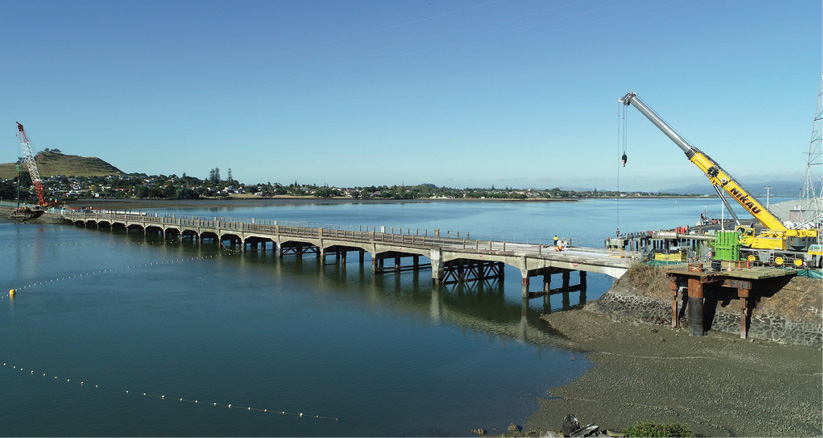For nearly 150 years there’s been a bridge over the Manukau Harbour, but legend has it that the very first crossing was actually a set of stepping stones and at low tide, local iwi used these stones to cross on foot between Māngere and Onehunga.
“It shows the strategic importance this corridor holds in linking the southern and northern suburbs and why Waka Kotahi wants to maintain an accessible off-road connection for these communities,” says Mark Kinvig, national manager infrastructure delivery.
Now, as design and technology leaps forward, it’s time to say goodbye to the Old Māngere Bridge with the removal of the last bridge beam as our team proceeds with the construction of a new iconic landmark.
The very first Old Māngere Bridge was built in 1875 and made of timber but unfortunately shipworm soon led to the bridge becoming unsafe, and it was closed in 1914.
In 1915, the second Old Māngere Bridge officially opened. It was made out of reinforced concrete and is believed to be the oldest bridge of this type crossing a New Zealand Harbour.
While it weathered a few storms in its time and even suffered a few ship strikes, it deteriorated over the years and was in such bad condition a temporary bridge was built over it in the 1980s so it could remain open.
The history of the Old Māngere Bridge also reveals the extent to which construction costs have risen with the old bridge costing approximately $500,000 in today’s terms.
Since late 2019, Waka Kotahi and its contractors McConnell Dowell have been simultaneously deconstructing the old bridge while building the new one.
The old bridge has been removed in almost the same process used to build it with the headstock and beams for each span taken out piece by piece.
“Removing the last bridge beam does feel like the end of an era, as the Old Māngere Bridge is a landmark which when talked about within the local community seems to naturally evoke the sharing of long, lost family memories and gives us an opportunity to reflect on how much Auckland has changed over the last 100 years.
“We felt the bridge is such an important slice of history it’s important to hold on to some of it, so, we collaborated with Heritage New Zealand Pouhere Taonga on ways to preserve the materials and these will be used in the landscaping around the abutments of the new bridge,” says Kinvig.
“We have removed some of the plinths that supported the bridge’s old hand rails, and also taken out one of the beams in the bridge structure, with a plan to incorporate them into the immediate area leading up to the new bridge as a link to the past for future generations.”
In partnership with mana whenua, the artwork which will be incorporated on the new bridge helps share the story of the Ōtāhuhu portage which was an important historic passage for many waka that travelled this area.
Despite disruptions due to Covid-19, progress on the new bridge is tracking well and is expected to open in late 2022.

